Day 7 = April 15, 2014
When you attend a knitting conference, please, if at all possible, share the experience with a friend. Take classes, shop the market and enjoy all that they have to offer together. You will undoubtedly see things and do things differently than you would by yourself. Plus best of all, you can share your knowledge from your classes with your friend.
With that piece of advice in mind, tonight I am going to talk about my best friend, my Mom. Mom and I are both signed up for a full schedule of classes at Interweave Knitting Lab in May. We attended Stitches East together last year and had a blast taking all the same 1-hour classes called Market Sessions, plus methodically going up and down every isle of the Market. This time, however, we are both taking 7 different classes. I am so excited because she and I picked our classes based on what we both wanted to learn. Here is a reminder of the classes that Mom is taking and my thoughts on the classes.
Love Your Lace! taught by Annie Modesitt
Description: Learn the basic
theory behind knitting lace, and perfect your lace chart reading skills.
Written instructions can have typos, but with a chart, what you see is what you
get, which is why it's the best option for knitters who want to "see"
what their lace will look like before they take up their needles. In this
class, we will knit a few simple lace panels, and move onto a more difficult
lace pattern for those who feel ready for a challenge. This class could change
your entire knitting outlook! My Thoughts: Lace mystifies me, even after attempting the Cold Mountain Wrap (I only got about 40 rows in) for my Guild knit-a-long. The charts that are in lace patterns could very well have been written in Mandarin for all the sense it makes to me. I would love to make some beautiful hand knit lace shawl, maybe after Mom shares her class wisdom I will have a different view of things.
~~~
Description: Expand your knitting toolkit! This class will teach you how to spot and fix mistakes of all kinds in your knitting. We'll cover the key issues: dropped and slipped stitches, incorrect stitches in a pattern, what to do about splitty yarn, accidental yarnovers, and mysterious holes. We'll share tips for safely ripping out, for fixing mistakes without ripping out and for deciding when you don't need to bother fixing at all. We'll also discuss strategies for fixing issues in completed projects and address common problems that come up when working patterns, like missing increases or decreases.
My Thoughts: One of a knitter's worst nightmares is finding a dropped stitch 40 rows back, among other things. This class will prove very useful to all who take it and those that have "friends taking it."
~~~
Description: Learn all the little secrets to make knitting life easier and better. Find out how to cast on in 2-tail method without running out of the second tail. Join a new skein of yarn or a new color without losing that first stitch. See ways of attaching buttons as you work. Create invisible circular bind-offs on a neck where the beginning and end are absolutely imperceptible. Weave in those little ends that are too short to put through a darning needle. Take away lots of small "fix-its” and improve those details!
My Thoughts: Knitter's love sharing their little secrets with other knitters. We all have our little tips and tricks that seem to make our knitting life easier. I love hearing and seeing what other knitters have to offer!
~~~
How to Select
Color Palettes for Knitting and Other Fiber Arts taught by Nancy Shroyer
Description: Choosing colors that will go together well in knitting or for any purpose
can be confusing or even scary if you don't have that inborn color sense. This
class will give you a set of recipes that are easy to follow to build a color
palette. All you have to do is choose one color you like and follow the recipe
for success. My Thoughts: I have a pretty good sense of color and color pairing. What I would love is a way to pair colors that I am not fond of. I tend to always go for the same color tones and would love to be able to design a larger variety of items for magazines (since they often has color themes). Having a set recipe would be great!
~~~
Mobius
Manipulated taught by Candace Eisner Strick
Description: The mathematical
equation for a Mobius is a mile long, but you don't need to know math to knit a
masterpiece. Don't worry about the cast on—Candace's version is so simple even
her parrot can do it. When a Mobius is worked from the center outward, the
portion on the top of the spine is the right side of the pattern and the
portion on the bottom of the spine is the wrong side. Even though this is a
true Mobius, you don't have to be content with it, but can manipulate it so
both the top and bottom portions come out to be the right side of the stitch
pattern. Try some short row shaping, or binding off a portion to make something
other than a scarf or stole. My Thoughts: My most recent obsession is the Mobius. I am currently designing a class around the Mobius. I have spent hours on YouTube checking out the different cast on methods, patterns and techniques. I am so excited to see what Mom will learn from this class!
~~~
U-Turns: Short
Rows for Shaping & Pattern taught by Mercedes Tarasovich-Clark
Description: Short rows are an
invaluable skill to learn to not only shape garments, but to create color and
texture patterns in your knitting. Learn several short row methods, including
classic wrap and turn, shadow wraps, and the PGR yarnover method, to create
shaping and pattern in your knitted projects. My Thoughts: When you say short rows, people get scared and think, "You want me to knit only part of the stitches on the needles? What am I to do with the rest of them?" This is a typical reaction to be followed by confusion. Short rows can be transforming!
~~~
Cables with
Color taught by Daniela Nii
Description: Garments with
cables are traditionally worked in a single color made popular by Aran sweaters
or Bavarian stockings and jackets. Learn how you can add color to your cable
work to highlight your cables, or create new looks while not distracting from
them. You will be introduced to and will practice three cable-with-color
techniques that will open new opportunities for your cable work. My Thoughts: One of the first projects I was able to decipher visually was a traditional cable and a horseshoe cable. At the time I had never even considered using more than one color. The possibilities are endless!
~~~
Question of the day
Which of these classes would you most like a friend to share with you?
Sharing Knitting,
Victoria
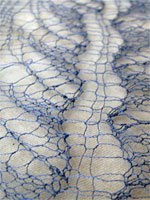
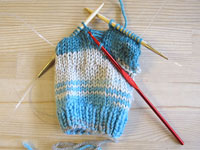
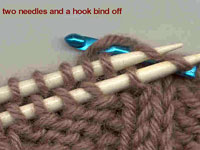
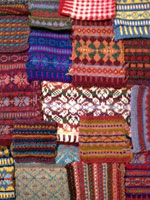
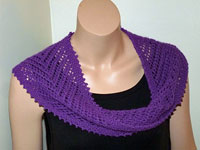

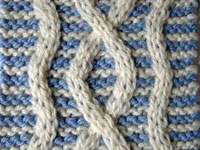
No comments:
Post a Comment